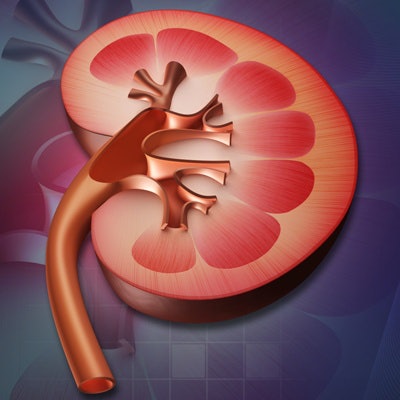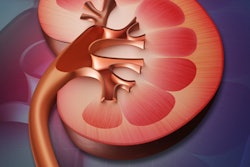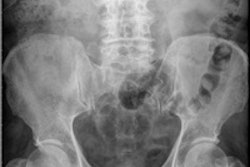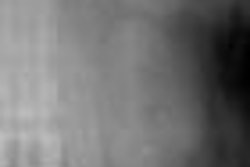
Which modality works best for diagnosing kidney stone disease, also known as urolithiasis: digital tomosynthesis, ultrasound, or the current reference standard of multidetector CT (MDCT)? It depends, according to a study published on 17 May in the European Journal of Radiology.
Many imaging modalities can be used to diagnose the disease, wrote a team led by Dr. Manavjit Singh Sandhu of the Postgraduate Institute of Medical Education and Research (PGIMER) in Chandigarh, India. But it can be challenging to determine which one is best in a given clinical situation.
"With numerous technological advancements in the field of radiology, many imaging modalities can be employed for the diagnosis of urolithiasis and it becomes confusing and at times difficult to decide which one to choose and when," Sandhu and colleagues wrote. "Clinicians [must] be aware of the potential benefits and relative strength of each imaging modality [to balance its use with] healthcare costs, radiation burden, and contrast patient safety in a given clinical scenario."
Imaging is key
Urolithiasis affects a wide range of patients, and imaging is a key part of both diagnosing the condition and following patients after diagnosis, according to the group. MDCT is the current gold standard for detecting the disease, with a sensitivity of 97% and a specificity of 98%. But it also has the highest radiation dose among the modalities used for this purpose.
"CT cannot be used too frequently in patients with recurrent calculi, or in post-treatment patients on follow-up," Sandhu and colleagues noted.
As an alternative to MDCT, digital tomosynthesis overcomes limitations found in conventional tomography, imparting minimal radiation dose and removing overlying structures that can confuse diagnosis. And ultrasound offers benefits such as convenience, low cost, and lack of radiation. So which of these two modalities should clinicians use to diagnose kidney stone disease, and when?
Sandhu and colleagues compared the diagnostic performance of digital tomosynthesis with that of ultrasound, using MDCT as the reference standard. The study included 66 patients who were either suspected of having kidney stone disease or had a history of recurrent disease; of these, 41 had urolithiasis and 25 had nonrenal causes of abdominal pain.
All patients underwent digital tomosynthesis, ultrasound, and MDCT within a 24-hour period. Two radiologists categorized the calculi, or stones, according to location and size. Sandhu's group then examined the sensitivity, specificity, and positive and negative predictive values for tomosynthesis and ultrasound.
In the 41 patients with urolithiasis, MDCT found 121 stones (105 renal, 14 ureteric, and two vesical), most of which were smaller than 5 mm.
| No. of calculi found with MDCT, digital tomosynthesis, and ultrasound | |||||
| Category | MDCT | Digital tomosynthesis | Ultrasound | ||
| Reader 1 | Reader 2 | Reader 1 | Reader 2 | ||
| Location | |||||
| Kidney | 105 | 51 | 47 | 56 | 51 |
| Ureter | 14 | 11 | 10 | 6 | 5 |
| Urinary bladder | 2 | 2 | 2 | 2 | 2 |
| Size | |||||
| < 5 mm | 52 | 9 | 7 | 9 | 7 |
| 5-10 mm | 32 | 28 | 25 | 22 | 19 |
| > 10 mm | 37 | 27 | 26 | 33 | 32 |
The average overall sensitivity of digital tomosynthesis for identifying kidney stone disease was 50% (p < 0.001), while the sensitivity of ultrasound was 50.4% (p = 0.005). As for identifying renal stones, digital tomosynthesis had a sensitivity of 47.1% and ultrasound a sensitivity of 50.9%; for ureteric stones, sensitivity was 74.9% with digital tomosynthesis and 39.2% with ultrasound.
"The disappointingly low sensitivity [of digital tomosynthesis] may be attributed to the fact that [most] of the calculi in our study group were smaller than 5 mm ... [which decreases] the overall sensitivity for digital tomosynthesis," the authors noted.
| Digital tomosynthesis vs. ultrasound for kidney stone disease | ||
| Performance measure | Digital tomosynthesis | Ultrasound |
| Sensitivity | 50% | 50.4% |
| Specificity | 89.8% | 89.8% |
| Positive predictive value | 96% | 96% |
| Negative predictive value | 26.5% | 26.5% |
| p-value | < 0.001 | < 0.005 |
Although the results did not show a statistically significant difference between digital tomosynthesis and ultrasound for diagnosing urolithiasis, the researchers did find that digital tomosynthesis performed better than ultrasound when it came to ureteric stones, suggesting that the modality may be preferred for the initial evaluation of these patients.
"Among the 14 ureteric calculi, the majority were in the mid ureter, which is technically the most difficult part of the ureter to examine on ultrasound as it is generally obscured by overlying bowel gas shadows," the group wrote. "The diagnostic accuracy of digital tomosynthesis in detecting ureteric calculi was relatively improved as it removes the overlying structures [and] enhances local tissue separation ... which allows for better visualization of calculi in the ureter."
Ultrasound, however, is effective in identifying hydroureteronephrosis, a condition in which the kidney and ureter swell because of obstructed urine flow. Because hydroureteronephrosis needs to be ruled out for a urolithiasis diagnosis, the researchers concluded that both modalities have a place in the radiology toolkit for diagnosing kidney stone disease.
"In this study, we found no statistically significant difference between the performance of ultrasound and digital tomosynthesis in diagnosis of urolithiasis," the authors concluded. "Digital tomosynthesis performed significantly better than ultrasound in detecting ureteric calculi ... and therefore may be preferred in this subset of patients ... [but] in clinical practice, ultrasound still would remain the preferred modality in the initial workup of patients, especially those presenting acutely."



















